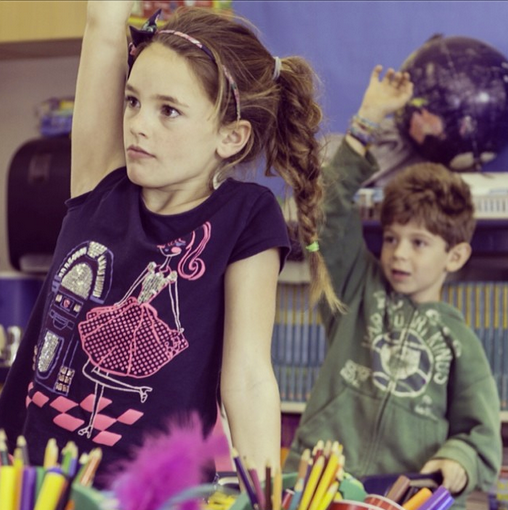Environmental Education for the Next Generation
I can’t help but smile when I see Strawberry, Banana, Tree and Sun grinning from ear to ear, as they greet Thunder with the thunderous enthusiasm her name deserves. “Yay. Awesome. This is my favorite kind of day,” shout the others. No, this is not some strange morphing of the Nature Channel and H.R. Pufnstuf flashbacks from my childhood. It’s just a regular old Tuesday afternoon, and I’m watching Environmental Education for the Next Generation (EENG) at work in Judy Cosio’s second grade classroom at Monroe Elementary School. This entirely student-run nonprofit organization-connecting student volunteers from different universities with first and second graders to explore hands-on science experiments and promote sustainable action-is the brainchild of Ryland King, a UCSB undergrad. Inspired by his work as a surf camp counselor with a developmentally disabled child and a volunteer stint at Isla Vista School, King started the group in 2009. “I really kind of learned that when one teaches, many people are affected,” he says.
Indeed, many, many are affected by King’s vision. This year alone, EENG (which has
expanded from Santa Barbara to Santa Cruz, San Luis Obispo, and San Francisco)
will connect more than 2,300 elementary school students with college students,
providing the resources for them to traverse the wonders of the natural world
together. Besides Monroe, local participants include Santa Barbara Charter, Foothill,
Isla Vista, Howard, Adams and Hope.
“It’s so expensive to teach science,” says Jenna Ryan, a UCSB volunteer who also
answers to “Thunder,” her “Nature Team” name. “It’s such a bummer because I
think science is the most captivating discipline by far if you have the resources to let
kids get dirty and play with materials and things. The cool thing is that EENG is
totally free of charge to teachers and we volunteer … taking a little bit of the burden
off the school, while still allowing kids to really develop their imagination and jump
into things.”
“As you can see, the kids just love it when they come,” says Ms. Cosio. That’s an
understatement. The kids practically tackle their team leaders with excitement the
moment they walk in the door.
“You can just tell how enthusiastic they are and how empowered they are by the end
of it. … I’m blown away every time by how inspiring it is,” says Ryan.
The lesson I observed was the Environmental Extravaganza, where the kids recap
what they’ve learned over the last eight weeks. Topics include renewable energy
resources, soil science and water conservation. Based on the Jeopardy-style quiz
used to review the lessons with the kids, they definitely knew their stuff.
Forming teams with five or fewer children per volunteer creates an energetic
dynamic between the young students and the college-student volunteers. It looks
like a cross between school and a really great nature camp.
One of King’s goals is to provide positive role models “who have a passion for
education or a care and love for the environment and taking sustainable action …
when eight year olds can speak confidently about topics of sustainable action,
people will listen. … The program doesn’t just end with the kids. When they go home
and talk with their families about using a reusable bag or turning off the lights or
turning off the water after they take a shower or wash their teeth, parents and
family and friends really think twice.”
I can certainly attest to that. I became a lot better at turning off the lights when my
son started monitoring our electricity usage.
It’s not just the teachers, kids and their families that benefit. The college students
are also developing what King calls “professional skills with a soul.”
Ryan, an Environmental Studies major, agrees, noting, “I think that EENG is cool
because it really spans through all of the disciplines. I’m in a group with a
philosophy major and a chemical engineering major and people that aren’t
necessarily the crunchy greenies that maybe I spend most of my time with in my
classes. It’s a really cool thing that you can either connect to the environmental
aspect of it or you connect to the really cool personal aspect of it, the social
entrepreneurship aspect of it and investing in the next generation of young people.”
In addition to mentoring the elementary school students, college students also
mentor each other, training new volunteers as EENG grows.
“I think one thing is that everyone who works with us is so passionate about it that
it isn’t work. For us it’s a bunch of fun,” says King. “It’s hundreds of different college
students that have the same passion about the work that are making EENG what it is
and it’s really a team effort.”
==
For more information about Environmental Education for the Next Generation or to
donate visit www.eeng.org. A gala fundraiser is planned for May 13. Check the
website for further details, as well as additional information on how to bring EENG,
free of charge, to your elementary school.
Originally published in the Santa Barbara Daily Sound on April 6, 2012.

